Le Gouessant Cooperative in France is committed to improving the design of its farms to meet society's growing demand for meat from animals raised in conditions that are more respectful of their welfare and minimize environmental impact. Faced with these new challenges, Le Gouessant developed the “Physior” concept. This system, which lies between conventional and organic production, focuses on improving animal welfare, environmental sustainability, and economic efficiency.
As part of the activities scheduled during Space 2022, we had the opportunity to visit the farm “La Maison Neuve”, located in Plestan accompanied by Sophie Ambrois. It is the first farm to apply the “Physior” concept across all production phases and serves as a test bed for the cooperative thanks to the sentinel pens equipped with a whole series of sensors.

Pierre Morfouace, owner of “La Maison Neuve” decided to renovate his farm due to the aging facilities and the need to adapt to new societal and market expectations. Also playing a crucial role in the decision to undertake this innovative project was his nephew Jules Chatton's interest in raising pigs and his project to take over the farm in the long term.
The first gilts entered in April 2021 and the first market pigs were sold in April 2022. The farm has a capacity of 265 dams and produces 6,200 pigs/year. They use a 7-batch management system and wean at 28 days. The farm employs the owner (Mr. Pierre Morfouace), two salaried employees (Noémi Studer and Jules Chatton), and an apprentice. The initial investment was 4.6 million euros, of which 1 million euros was allocated to R&D. The project also received subsidies from the Brittany Region.
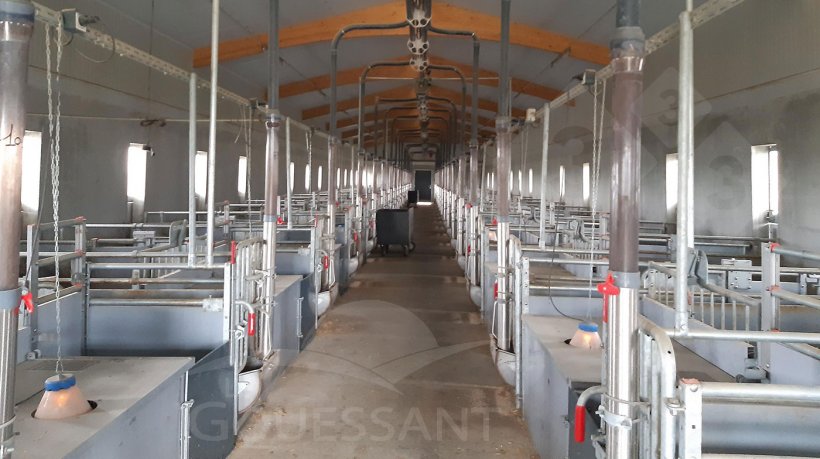
Improving animal and worker well-being
The barns are optimized for the comfort of both the farmer and the animals.
The Physior concept is based on a layout in three living zones: resting area, feed/water area, and dunging area. This involves an indoor area, designed for the comfort and rest of the animals, and a small outdoor yard with access to fresh air and natural light.
In each barn:
- Natural light is favored.
- Indoor air is renewed by natural ventilation generated by thermoregulated openings.
- V-shaped scrapers are used to remove excrement from under the pits and separate urine from feces to reduce ammonia emissions,
- The solid manure is composted and this amendment is used as an organic soil conditioner for crops.
- All pens have an outside yard.
- The stocking density is lower than in conventional production (1.20 m2 / finishing pig).
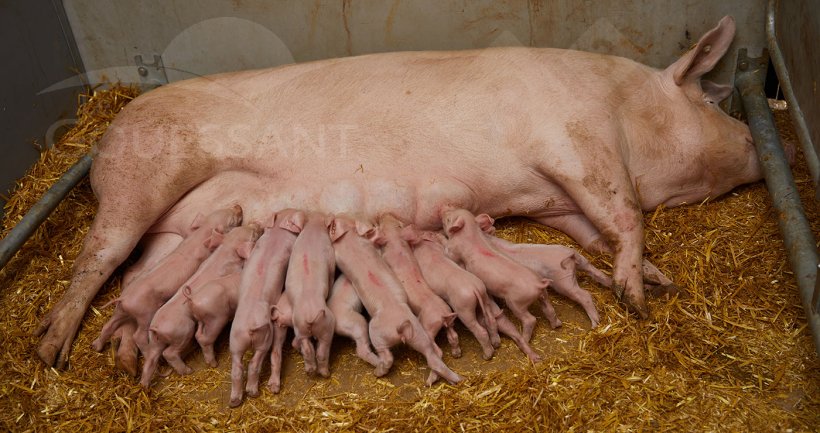
Additionally:
- All animals have access to the outdoors as they desire.
- Sows are housed on straw bedding.
- There is no surgical castration; all males are immunocastrated.
- There is no tail docking.
- Farrowing is completely free (indoors or outdoors).
- All animals have access to straw as manipulable material.
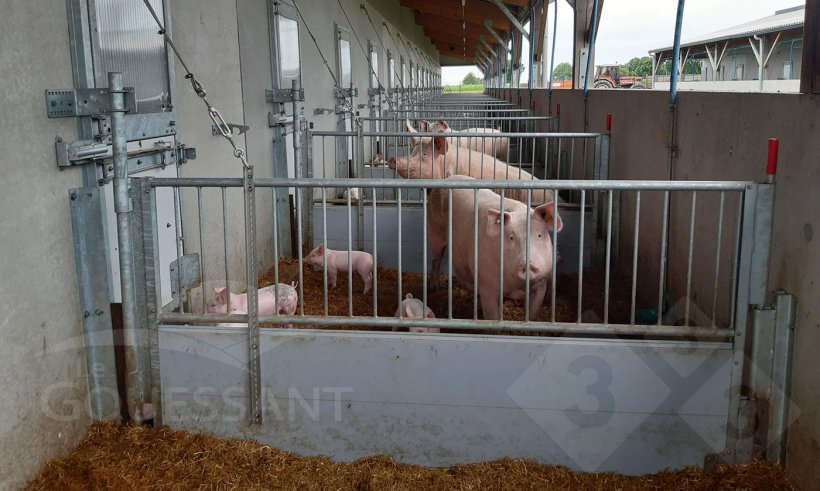
"La Maison Neuve" as a test bed
Several “sentinel” pens are equipped with cameras and sensors combined with RFID ear tags, which facilitate individual identification and tracking of the movements and behavior of each pig and generate a large amount of data (monitoring of water and feed consumption, temperature, humidity, CO2 and ammonia levels, presence of particles, etc.), as well as values related to occupational comfort (distribution of tasks, measuring noise levels, etc.). Evaluation criteria have also been developed with IFIP to observe and analyze behavior, health, hygiene, and the human-animal relationship.
Advantages and disadvantages of the system
The barn design with the Physior system offers multiple advantages, but it also has some drawbacks or points for improvement:
Working conditions
- Digital tools and automated tracking facilitate daily management and decision-making.
- Providing straw as a manipulable material for the animals is an additional daily workload, but the farmers consider it completely manageable. For them, it is an opportunity to observe the animals directly. They have equipped themselves (with a handmade cart, etc.) to facilitate straw handling.
- Individual qualitative interviews were conducted with the farmer and his employees by an IFIP sociologist on three occasions over four years to gather their perceptions.
- Positive points include: working with natural light, the relationship between humans and animals, the seasonal rhythm, and positive comments from visitors.
- On the other hand, cleaning and handling were identified as areas for improvement.
According to Pierre Morfouace, many job applications have been received, demonstrating the Physior model's attractiveness for farm employees. This is crucial for animal production, which faces difficulties in recruitment.

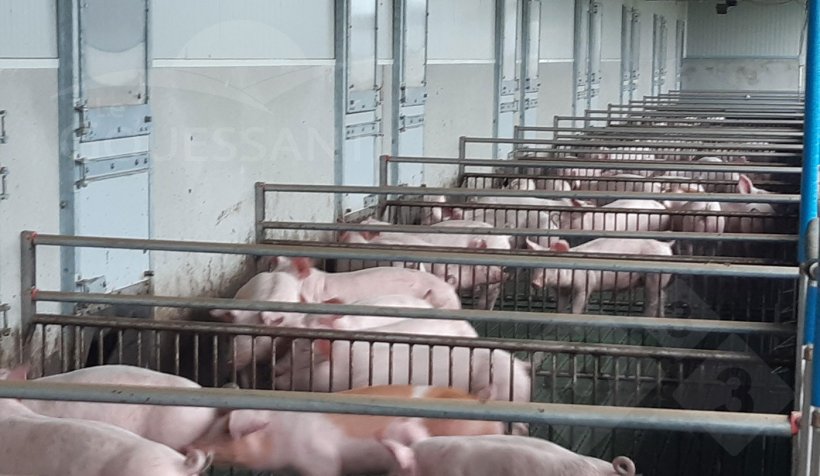
Animal welfare and efficiency
Continuous and detailed animal monitoring allows for better animal welfare management, ensuring a suitable and stress-free environment for the pigs.
- No tail docking: since November 2022, weekly assessments of tail biting (number and severity of lesions) have been performed. Average tail biting has decreased from 7.7% in post-weaning and 12.9% in finishing to just 0.3% in post-weaning and 3% in finishing. To achieve these results, they have worked on managing manipulable materials, ensuring it doesn't greatly affect the workload.
- Completely free farrowing: Maison Neuve weans, on average, more than 12 piglets per litter. This performance is in line with alternative standards, with room for improvement. Mortality rate was the subject of a joint study with IFIP. A thermal assessment was carried out in the heated nests and the indoor portion of the farrowing rooms, revealing that the lamp placement did not distribute heat optimally. Improvements are being made to increase thermal comfort, such as replacing the single lamp with two less powerful lamps. In addition, long straw is distributed at farrowing time to encourage the free-housed sow's natural nesting behavior. The sow feeding program is also being reviewed. The impact of these changes on mortality will be evaluated during the cold periods of 2024-2025. The goal is to reduce losses from the current 20.6% to 15% in one year.
Sustainability and economic efficiency
Collecting scientific data and using advanced technologies optimizes resources and improves economic efficiency, ensuring the farm's long-term viability.
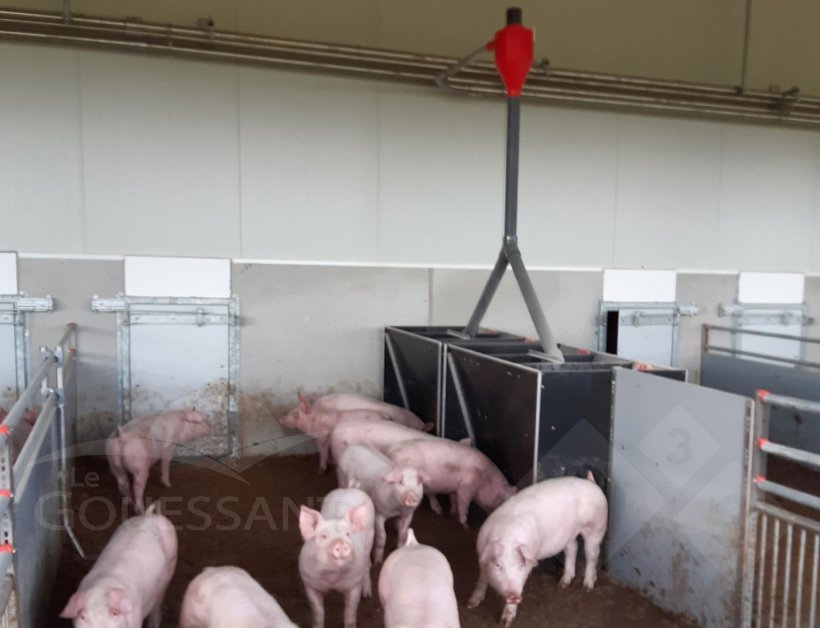
Marketing of animals
The farmer has signed a 12-year marketing agreement for his pigs with a company in the sector. This contract has taken into account the cost premium associated with this production model, estimated at approximately 30%. Consumers seem to be willing to pay more for this product. Time will tell whether these intentions will result in actual purchases, and at what percentage...



